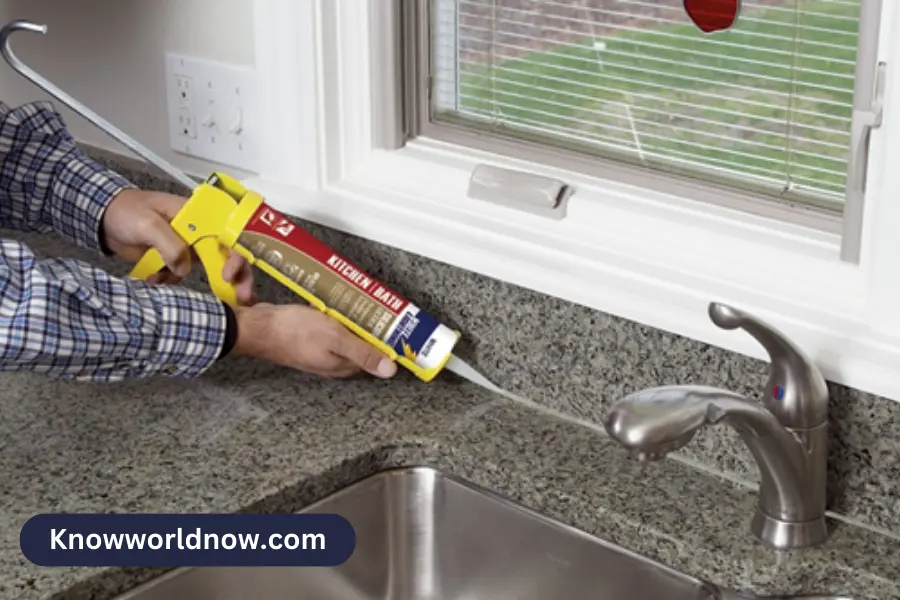A kitchen sink is an essential part of any kitchen, and it undergoes constant wear and tear due to daily use. Over time, the sink may develop leaks and cracks, which can lead to water damage in the surrounding area. To prevent this, it is important to seal the sink properly using a good quality kitchen sink sealant.
Choosing the right kitchen sink sealant can be a daunting task, with so many different types and brands available in the market. In this guide, we will take a look at the various types of kitchen sink sealants available, and how to apply them correctly to ensure a water-tight seal.
Types of Kitchen Sink Sealants
Silicone Sealant: Silicone sealant is the most commonly used kitchen sink sealant. It is easy to apply and provides a strong and durable seal. Silicone sealant is resistant to moisture, heat, and chemicals, making it ideal for use in the kitchen. It is also available in a range of colors to match the sink or countertop.
Polyurethane Sealant: Polyurethane sealant is another popular option for sealing kitchen sinks. It provides a very strong bond and is resistant to water, chemicals, and heat. However, it is more difficult to apply than silicone sealant and has a longer curing time.
Butyl Rubber Sealant: Butyl rubber sealant is a very strong and durable sealant that is resistant to water, heat, and chemicals. It is ideal for use in areas that are exposed to harsh conditions, such as outdoor kitchens or industrial kitchens. However, it is more difficult to apply than silicone sealant and is not available in as many colors.
Acrylic Sealant: Acrylic sealant is a water-based sealant that is easy to apply and dries quickly. It is ideal for use in areas that are not exposed to harsh conditions, such as residential kitchens. However, it is not as strong or durable as other types of sealants and may require more frequent reapplication.
Choosing the Right Kitchen Sink Sealant
When choosing a kitchen sink sealant, there are several factors to consider. These include:
Type of Sink: The type of sink you have will determine the type of sealant you need. For example, if you have a stainless steel sink, silicone sealant is the best choice as it is compatible with stainless steel.
Type of Countertop: If your sink is mounted on a countertop, you need to choose a sealant that is compatible with the countertop material. For example, if you have a granite countertop, you need to choose a sealant that is compatible with granite.
Type of Use: The type of use the sink gets will determine the type of sealant you need. For example, if you have a commercial kitchen that gets a lot of use, you need a stronger sealant than if you have a residential kitchen that gets less use.
Color: If you want the sealant to match the color of the sink or countertop, you need to choose a sealant that is available in a range of colors.
Applying Kitchen Sink Sealant
Now that you have chosen the right kitchen sink sealant, it is time to apply it correctly. Follow these steps to ensure a water-tight seal:
Clean the Area: Before applying the sealant, clean the area around the sink thoroughly. Remove any old sealant or debris using a scraper or a putty knife.
Apply the Sealant: Apply the sealant evenly around the edge of the sink. Use a caulking gun for silicone sealant and a putty knife for other types of sealants.
Smooth the Sealant: Once you have applied the sealant, smooth it out using a sealant tool or your finger. Make sure the sealant is evenly spread and there are no gaps or air pockets.
Let it Cure: Depending on the type of sealant you have used, it may take anywhere from a few hours to a few days to cure completely. Follow the manufacturer’s instructions on the curing time.
Test the Seal: Once the sealant has cured, test the seal by running water into the sink. Check for any leaks or seepage around the edges of the sink. If there are any leaks, reapply the sealant and repeat the process.
Conclusion
In conclusion, choosing and applying the right kitchen sink sealant is an important aspect of maintaining the functionality and longevity of your sink. With so many types and brands of sealants available in the market, it is important to consider the type of sink, countertop, and use before choosing the right sealant.
Silicone sealant is the most commonly used sealant for kitchen sinks, as it is easy to apply and provides a strong and durable seal. Polyurethane sealant and butyl rubber sealant are also good options, but they are more difficult to apply and have longer curing times. Acrylic sealant is ideal for use in residential kitchens that do not get heavy use.
Applying the sealant correctly is just as important as choosing the right sealant. Cleaning the area thoroughly, applying the sealant evenly, smoothing it out, and letting it cure properly are all important steps to ensure a water-tight seal. Testing the seal once it has cured is also important to ensure there are no leaks or seepage.
By following these simple steps, you can ensure a leak-free and water-tight kitchen sink that will last for years to come. Don’t overlook the importance of choosing and applying the right kitchen sink sealant – it can save you a lot of headaches and expenses in the long run.


